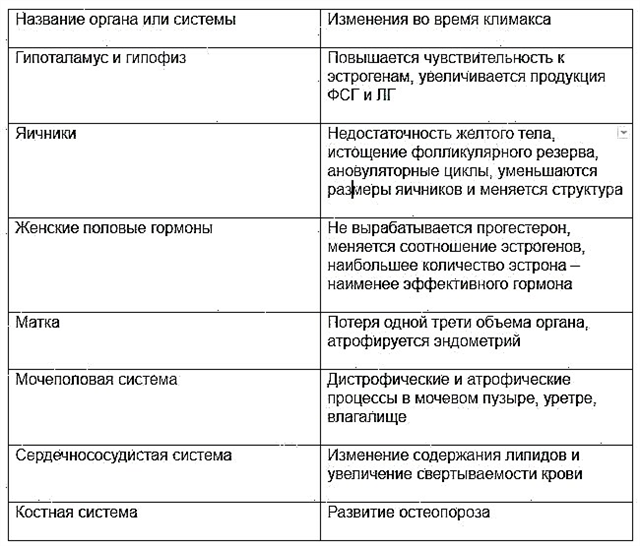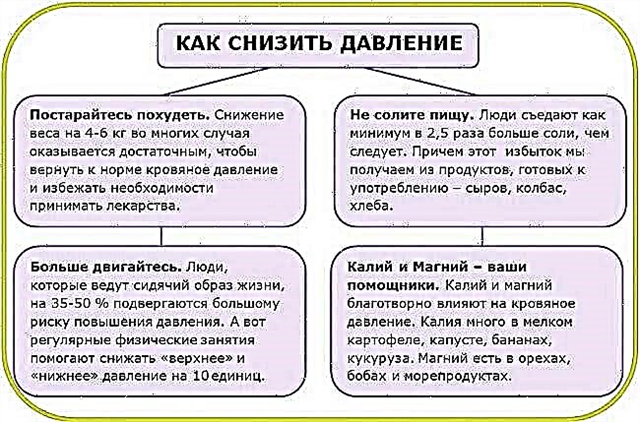The frontal sinuses are an integral part of the paranasal air cavity system and perform a number of functions related to the protection of the body, the organization of normal breathing and speech. They are located in the immediate vicinity of the meninges, so their diseases can threaten with serious complications.
Front cameras structure and functions
 The frontal sinuses, like the maxillary sinuses, in their location belong to the anterior voids, which communicate with the nose through the tortuous and long middle frontal-nasal passage. This anatomy predetermines much more frequent infectious diseases of the anterior cavities.
The frontal sinuses, like the maxillary sinuses, in their location belong to the anterior voids, which communicate with the nose through the tortuous and long middle frontal-nasal passage. This anatomy predetermines much more frequent infectious diseases of the anterior cavities.
The frontal chambers are a paired organ located in the thickness of the frontal bone.
Their size and configuration can vary significantly from person to person, but on average, each frontal sinus has a volume of about 4.7 cubic centimeters. Most often it looks like a triangle, lined with a mucous membrane inside, with four walls:
- The orbital (lower) is the thinnest, most of its area is the upper wall of the orbit, with the exception of the edge adjacent to the ethmoid bone. On it there is an anastomosis of a canal 10-15 mm long and up to 4 mm in diameter, extending into the nasal cavity.
- The front (front) is the thickest, represented by the outer part of the frontal bone, which has a thickness of 5 to 8 mm.
- The cerebral (posterior) - consists of a thin but strong compact bone, bordered by the anterior cranial fossa and the dura mater.
- The inner (medial) one separates the two chambers, in its upper part it can deviate to the left or right.
A newborn child does not have frontal sinuses, they begin to form only at 3-4 years of age and finally develop after puberty.
They appear at the upper inner corner of the orbit, consist of ethmoid bone cells, and the nasal mucosa grows into them. In parallel with this, the process of resorption of the spongy bone, which is located between the inner and outer plates of the frontal bone, takes place. In the freed space, frontal voids are formed, which sometimes can have niches, bays and internal partitions in the lumen. Blood supply comes from the ophthalmic and maxillary arteries, innervation - from the orbital nerve.
The cavities are most often not the same, since the bone plate separating them is usually not located exactly in the center, sometimes it may be absent, then a person has one large cavity. In rare cases, the dividing bone is located not vertically, but horizontally, and the chambers are located one over the other. According to various studies, 5-15% of people have no frontal sinuses at all.
over the other. According to various studies, 5-15% of people have no frontal sinuses at all.
The main functions of front cameras today are:
- protection of the brain from injury and hypothermia (act as a "buffer");
- participation in the formation of sounds, increased vocal resonance;
- regulation of the pressure level in the nasal passages;
- warming and humidifying the inhaled air;
- decrease in the mass of the skull in the process of its growth.
Acute frontal sinusitis: etiology and symptoms
Since the paranasal compartments are covered with mucous membranes inside, the main disease is the inflammatory process in them. If we are talking about the frontal sinuses, then their inflammation is called frontal sinusitis. The inflammation has a wave-like course, it can quickly turn from an acute stage into a chronic one and then proceed asymptomatically or pass without treatment.
The main cause of the disease, as a rule, is the inflammatory process in the upper respiratory tract, from where it passes to the frontal compartments ascending.
In case of untimely or insufficient treatment due to a change in the pH of the secretion, the immune barrier from the ciliated epithelium weakens, and the pathogenic microflora penetrates into the chambers, covering the mucous membranes. Many doctors are of the opinion that the acid-base balance of mucus can be disturbed by drops with a vasoconstrictor effect, which are used for a long time.
The main prerequisites for the development of the disease:
- a runny nose that does not go away for a long time;
- poorly cured or transferred "on the legs" colds;
- hypothermia of the body, in particular the legs;
- stress;
- trauma to the front of the head.
The inflammatory process is accompanied by hyperemia and swelling of the mucous membranes, as a result of which increased secretion occurs while the outflow of fluid is obstructed. Oxygen supply is sharply limited or completely stopped. The gradually increasing internal pressure is the cause of severe pain in the forehead area.
Symptoms of the disease are divided into general and local, which together give a characteristic clinical picture of acute frontal sinusitis.
Local signs:
- complete absence or severe difficulty in nasal breathing;
- throbbing and pressing pain above the eyebrows, which intensifies when the head is tilted forward or when the hand is pressed on the forehead;
- profuse purulent discharge from the nasal passages (one or both);
- leakage of secretion into the oropharynx;
- swelling may spread to the upper eyelid or corner of the orbit of the eye.
Simultaneously with the local ones, general signs are growing, indicating an intoxication of the body:
- temperature rise to 37.5-39 degrees, chills are possible;
- blood reaction (increased ESR, leukocytosis);
- muscle weakness;
- spilled headaches;
- hyperemia of the skin in the projection of the affected organ;
- aching bones and joints;
- rapid fatigue and drowsiness.
Diagnostics and conservative treatment of frontal sinusitis
To study the clinical picture and make the correct diagnosis, you must consult an otolaryngologist. The ENT doctor interviews the patient, after which he performs a rhinoscopy - a visual examination of the nasal cavities and paranasal sinuses in order to determine the place of discharge of pus and the state of the mucous membranes. Palpation and percussion (tapping) help reveal tenderness in the anterior wall of the forehead and the corner of the eye on the affected side.
To confirm the alleged diagnosis, the patient donates blood for analysis, in addition, an x-ray (in lateral and direct projection) or computed tomography is performed.
These methods are the best way to determine the lesion focus, the amount of accumulated pus, the depth and shape of the chambers, and the presence of additional partitions in them. The secreted mucus undergoes a microbiological examination to determine the pathogen and prescribe adequate treatment.
In most cases, conservative treatment is used, including anti-inflammatory therapy, unclogging of the frontal-nasal canal and restoration of drainage of the cavity. In this case, the following drugs are used:
- broad-spectrum antibiotics in the presence of a high temperature (Klacid, Avelox, Augmentin) with subsequent correction if necessary;
- analgesics (askofen, paracetamol);
- antihistamines (claritin, suprastin);
- drugs to reduce the secretion of mucous membranes by high adrenalization (sanorin, nasivin, galazolin, sinupret, naphthyzin);
- means for strengthening the walls of blood vessels (vitamin C, rutin, askorutin).
In the absence of severe intoxication of the body, they show a high efficiency of physiotherapy (laser therapy, UHF, compresses). The YAMIK sinus catheter is also used, which allows flushing the chambers with medicinal substances.
Trepanopuncture
In case of ineffectiveness of conservative treatment (persistence of a high temperature, headache, impaired nasal breathing, the release of thick mucus or pus) for three days, as well as if pus in the cavities is detected by X-ray or computed tomography, sinus trepanopuncture is prescribed. Today it is a very effective technique that gives a high level of recovery. This is a fairly simple operation that is well tolerated by patients, regardless of their age.
The essence of the operation consists in mechanical penetration under the bone tissue in order to:
- removal of purulent contents;
- restoration of drainage through the connecting channel;
- reducing the swelling of the membranes;
- suppression of pathogens that caused inflammation.
To carry out the surgical intervention, a manual drill with a length of no more than 10 mm with a depth stop and a set of plastic or metal cannulas for washing is used.
When determining the optimal entry point, special calculations are used, which are confirmed by X-ray images in different projections.
Trepanopuncture is performed in the inpatient department of the hospital, while local infiltration anesthesia is mainly used (ledocaine, novocaine). With the help of a drill, a hole is made in the thick anterior wall of the bone, through the opening of which the entire organ is probed. A special cannula is inserted into the hole and fixed through which medicines are injected over the next few days. In addition, the sinus and the connecting canal are washed with antiseptic solutions, followed by the evacuation of blood clots, polyps, cystic formations, and granulation tissue.
Less commonly, otolaryngologists use the method of punching the bone with a chisel. The vibration generated in this case is contraindicated in:
- meningitis;
- abscesses;
- osteomyelitis of the cranial bones;
- thrombophlebitis.
 There is also a method of puncturing the lower wall of the cavity with a sharpened special needle, which is much thinner than the front, and is widely used in practice. In this case, a thin subclavian catheter is inserted into the lumen of the needle, which is fixed on the skin after removing the needle and serves as a passage for washing and delivering drugs to the chamber. However, this operation is considered less preferable and more difficult due to the presence in the immediate vicinity of the orbit. LustGate
There is also a method of puncturing the lower wall of the cavity with a sharpened special needle, which is much thinner than the front, and is widely used in practice. In this case, a thin subclavian catheter is inserted into the lumen of the needle, which is fixed on the skin after removing the needle and serves as a passage for washing and delivering drugs to the chamber. However, this operation is considered less preferable and more difficult due to the presence in the immediate vicinity of the orbit. LustGate
Due to the location near the lesion of the meninges, delay in seeking medical attention or attempts to self-medicate can lead to serious consequences, including death. Complications of frontalitis can be diseases such as purulent inflammation of the orbit, meningitis, osteomyelitis of the cranial bones, etc.
Traditional methods of treatment and prevention of frontal sinusitis
Folk recipes are mainly aimed at reducing edema and removing mucus, their use must be agreed with the attending physician:
- Boil bay leaves (5-10 pcs.) In a saucepan, transfer to low heat and breathe, covered with a towel, for five minutes. Repeat for several days in a row, this promotes the outflow of pus.
- A teaspoon of salt, some baking soda, and three drops of tea tree oil are mixed in a glass of warm water. Clear the nose, then, tilting the head forward, using a small syringe under pressure, pour the solution into one nostril so that it flows out of the other. Repeat 2-3 times a day, then apply drops for the common cold.
Prevention of the disease is as follows:
- timely treatment of rhinitis and sinusitis, if the runny nose has not passed in three days, you should contact the clinic;
- strengthening immunity through hardening and exercise;
- vitamin therapy in the autumn and spring periods;
- control of the purity of the nose and free nasal breathing.



